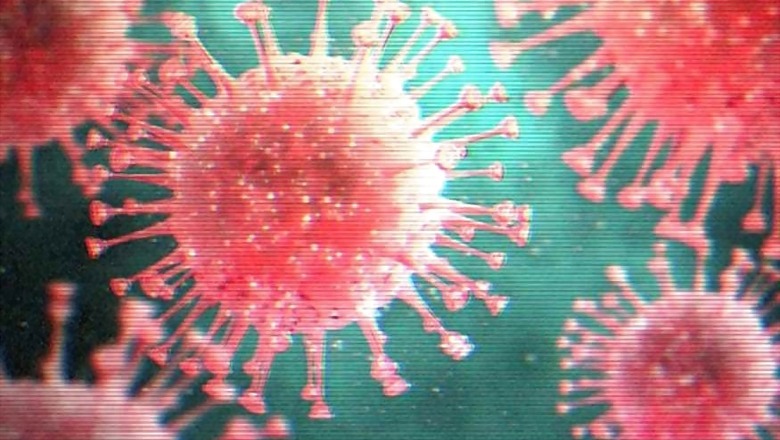
views
Beijing: People infected with the novel coronavirus who are more than 80 years old have the highest chances of dying from infection of all age groups, according to the largest study since the highly contagious outbreak began in China, with details of nearly 44,000 cases.
The study, published in the Chinese Journal of Epidemiology, revealed that a total of 1,023 deaths have occurred among 44,672 confirmed cases as of February 11, for an overall case fatality rate of 2.3 per cent.
The novel Chinese coronavirus, or COVID-19, has so far killed over 1,800 individuals and infected more than 72,000 people, Chinese health officials said on Tuesday.
According to the clinicians from the Chinese Center for Disease Control and Prevention, majority of the patients were aged 3069 years (77.8 per cent), male (51.4 per cent), farmers or labourers (22 per cent), and diagnosed in Hubei Province (74.7 per cent).
The study noted that people with ages 80 and above had the highest case fatality rate of all age groups at about 15 per cent.
It said the death rate from the disease for males was 2.8 per cent and that for females was about 1.7 per cent.
In terms of occupation, patients who reported being retirees had the highest case fatality rate at about 5 per cent, and those in Hubei Province had a fatality rate that was more than seven-fold higher at nearly 3 per cent compared to patients in other regions of China, the study noted.
The researchers reported that patients with comorbid conditions had much higher fatality rates -- 10.5 per cent for those with cardiovascular disease, 7.3 per cent for diabetes, and 6.3 per cent for chronic respiratory disease, 6.0 per cent for hypertension, and 5.6 per cent for cancer.
The fatality rate was about 50 per cent for cases categorised as critical, the study noted.
Assessing the cases as they emerged over the weeks, the scientists found that in December 2019 only 022 cases/day began to experience symptoms with the peak onset of symptoms for all cases overall occurring on February 1, 2020.
Since then, the researchers reported that the onset of illness has declined.
The researchers noted that the virus is highly contagious.
"It has spread extremely rapidly from a single city to the entire country within only about 30 days," the researchers reported in the study.
"Moreover, it has achieved such far-reaching effects even in the face of extreme response measures including the complete shutdown and isolation of whole cities, cancellation of Chinese New Year celebrations, prohibition of attendance at school and work, massive mobilisation of health and public health personnel as well as military medical units, and rapid construction of entire hospitals," they said.
Overall, the scientists said the viral infection has been mild for nearly four-fifths of the patients, and has a very low case fatality rate.
Among the 1,023 deaths, they noted that a majority have been of age 60 years or older and/or have had pre-existing, comorbid conditions like hypertension, heart disease, and diabetes.
"Moreover, the case fatality rate is unsurprisingly highest among critical cases at 49 per cent, and no deaths have occurred among those with mild or even severe symptoms," the clinicians wrote in the study.
The scientists also suspect that the virus may have jumped from animals at Huanan Seafood Wholesale Market in Wuhan to humans at several times in the past.
This, they believe, may have allowed the novel coronavirus to be transmitted from a still-unknown animal into humans and, due to its high mutation and recombination rates, they speculate it adapted to become increasingly efficient at human-to-human transmission
.
The study also noted that some strategies used to curtail the spread of the outbreak may have worked.
"The downward trend in the overall epidemic curve suggests that perhaps isolation of whole cities, broadcast of critical information (e.g., promoting hand washing, mask wearing, and care seeking) with high frequency through multiple channels, and mobilisation of a multi-sector rapid response teams is helping to curb the epidemic," the researchers wrote in the study.
One limitation pointed out by the authors of the study is that a large proportion of the 72,314 cases reported in the study were not confirmed by the sensitive nucleic acid testing as this process is slow, labour intensive, and requires specialised equipment.
However, all the cases were diagnosed clinically and investigated by trained epidemiologists, they said.
According to the authors, while the actions taken by the Chinese government has slowed down the epidemic in China, and curbed its spread to the rest of the world, there may be more challenges ahead.
"Huge numbers of people will soon be returning to work and school after the extended New Year holiday. We need to prepare for a possible rebound of the COVID-19 epidemic in the coming weeks and months," the researchers warned.

















Comments
0 comment